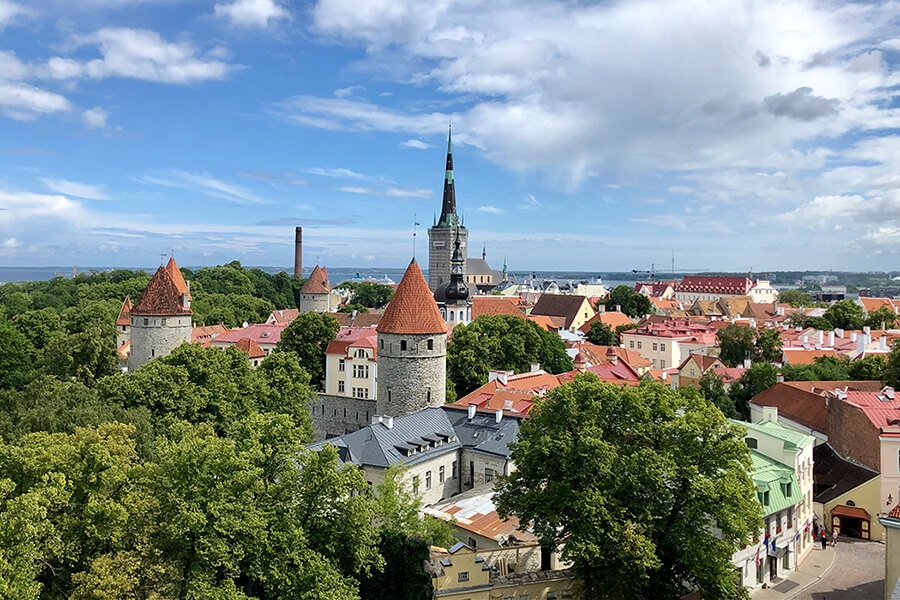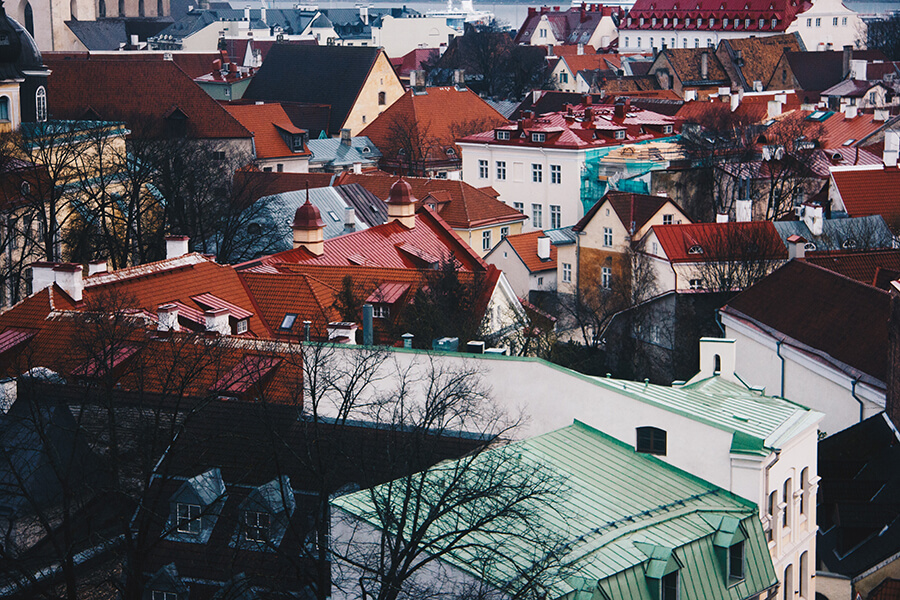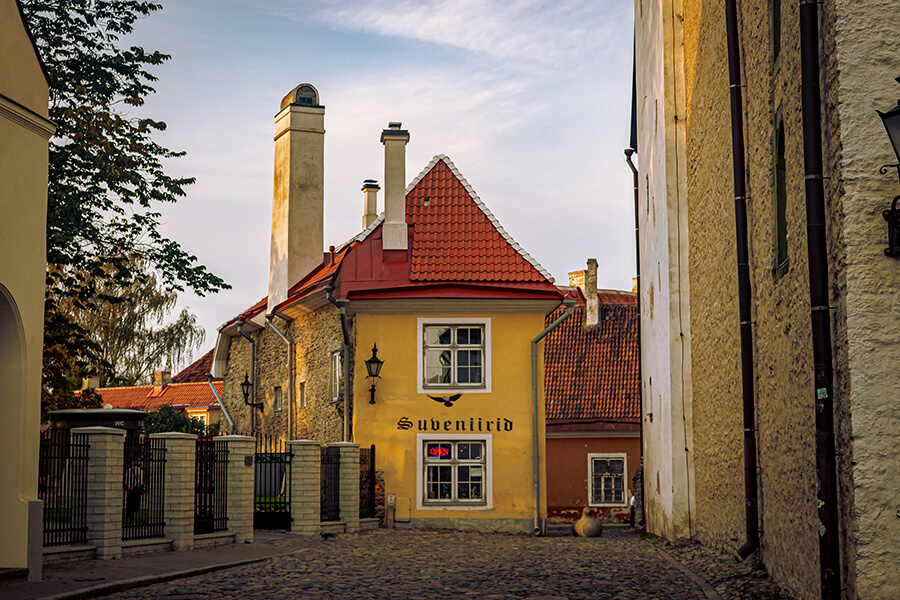Tallinn is the capital and the largest settlement of Estonia, with one-third of the country’s population living in the city (437,620 people).

IT salaries in Tallinn
The average IT salary in Tallinn is around €2,000 per month.
Average IT salaries in Tallinn (€/month, net salary with bonuses) according to Palgad.ee:
- ABAP programmer: 830 – 4,800
- Android developer: 1,620 – 4,015
- ASP.NET programmer: 1,115 – 2,580
- Business Intelligence developer: 1,280 – 3,220
- C developer: 1,010 – 2,920
- C# developer: 1,000 – 3,250
- C++ developer: 860 – 4,330
- Database administrator: 980 – 2,340
- Database analyst: 1,060 – 2,810
- DevOps engineer: 1,020 – 3,870
- iOS developer: 1,180 – 3,920
- IT analyst: 1,290 – 2,650
- IT architect: 1,540 – 4,540
- IT consultant: 970 – 2,940
- IT network administrator: 1,060 – 2,865
- IT product manager: 1,530 – 3,900
- IT project manager: 1,200 – 2,730
- IT security specialist: 1,450 – 4,310
- IT system administrator: 1,160 – 2,410
- Java developer: 1,340 – 3,170
- JavaScript developer: 1,260 – 2,610
- .NET developer: 1,2300 – 3,145
- Objective-C developer: 920 – 3,450
- Oracle developer: 1,020 – 3,430
- Perl developer: 890 – 3,225
- PHP developer: 1,060 – 2,550
- Python developer: 1,400 – 2,760
- QA automation tester: 1,170 – 2,680
- Ruby developer: 1,130 – 3,420
- Scrum master: 1,400 – 3,360
- Software engineer: 1,270 – 3,770
- Systems administrator: 900 – 2,410
- Systems engineer: 930 – 3,220
- Technical support specialist: 970 – 2,050
- Technical writer: 850 – 2,210
- UX expert: 990 – 2,540
- Web designer: 1,100 – 2,690
Economy
Tallinn is an industrial, cultural, and financial center of Estonia. It’s also an important European technology hub.
Important economic sectors in Tallinn include:
- Energy
- Finance
- Food processing
- Information and communications technology (ICT)
- Logistics
- Manufacturing
- Retail
- Tourism

During the last years, Tallinn has become one of the main IT centers in Europe. It’s home to the Cooperative Cyber Defence Centre of Excellence (CCD COE) of NATO, the EU Agency for large-scale IT systems, as well as IT development centers of large corporations, such as Arvato Financial Solutions, Kuehne + Nagel, Skype, and TeliaSonera. In addition, Ericsson has one of its biggest production facilities in Europe located in Tallinn.
The largest technology companies present in Tallinn include:
- Bolt
- Ericsson
- Festivality
- Kuehne + Nagel
- Pipedrive
- Skype
- Starship
- TeliaSonera
- TransferWise
Cost of living
The cost of living in Tallinn is lower than in many other European capitals, such as Berlin, Stockholm, Vienna, etc. This is how consumer prices in other cities compare with prices in Tallinn:
- Copenhagen: 65% higher
- Stockholm: 44% higher
- Helsinki: 37% higher
- Berlin: 24% higher
- Vienna: 22% higher
- Riga: 7% lower
- Moscow: 33% lower
- Saint Petersburg: 41% lower
The average monthly costs in Tallinn are about €650 for a single person or €2,230 for a four-person family (excluding rent), according to Numbeo.

Here are examples of the average prices in Tallinn (€):
- Meal at McDonald’s: 6–7
- Meal at another inexpensive restaurant: 5–15
- Average food basket (milk, bread, eggs, cheese, chicken, apples, potatoes, water, beer): 20
- Monthly fee at a fitness club: 25–63
- Monthly pass: 20–30
- Monthly rent (1 bedroom): 450–700
- Monthly rent (3 bedrooms): 700 – 1,100
- Property prices per square meter: 1,500 – 3,200
- Utilities: 80–180 month
- Internet: 20–30 per month
Rental prices can vary across different city districts. For example, Rotermann and Pirita are more prestigious and expensive areas, while Lasnamäe and Kopli are areas with cheap housing and higher crime rates.
Although consumer prices in Tallinn are not very high, you can save even more by getting a loyalty card. The main grocery chains are Rimi, Maxima, and Prisma, with the latter being more expensive.
Travel
As Estonia is a member of the European Union and the Schengen zone, you can travel from Tallinn to almost anywhere in Europe. Tallinn is located 80 km south of Helsinki, 300 km north of Riga, 320 km west of Saint Petersburg, and 380 km east of Stockholm.
Several ferry operators connect Tallinn to Helsinki, Mariehamn, Stockholm, and Saint Petersburg. Passenger lines connect Tallinn to Helsinki in approximately 2 – 3.5 hours by cruise ferries.
The Lennart Meri Tallinn Airport located just about 4 km from Town Hall square is the biggest gateway into Estonia. There are 40-something direct destinations including Amsterdam, Berlin, Frankfurt, Helsinki, London, Moscow, Oslo, Stockholm, Warsaw, and more.
As to traveling within the city, it’s not necessary to own a car. Tallinn is a relatively small city, and almost anywhere can be reached in 15–20 minutes, often on foot. Moreover, public transport in Tallinn is free for residents (or about €2 per trip for tourists).
Entertainment
In 2018, Lonely Planet named Tallinn the number one best-value destination in the world. The Estonian capital is home to more than 60 museums and galleries, as well as the Old Town, which is listed as a UNESCO World Heritage Site. There are also night clubs, plenty of cozy cafes and restaurants, the passenger port, an indoor market, and the hipster Telliskivi district.
Tallinn is also a great city for lovers of nature: the 50 km coastline offers breathtaking views of the city, beaches, parks, and recreational areas.
Notable events regularly held in Tallinn include the Estonian Song Festival (one of the largest choral events in the world), Tallinn Black Nights Film Festival, Tallinn Music Week, Stalker Festival, and more.